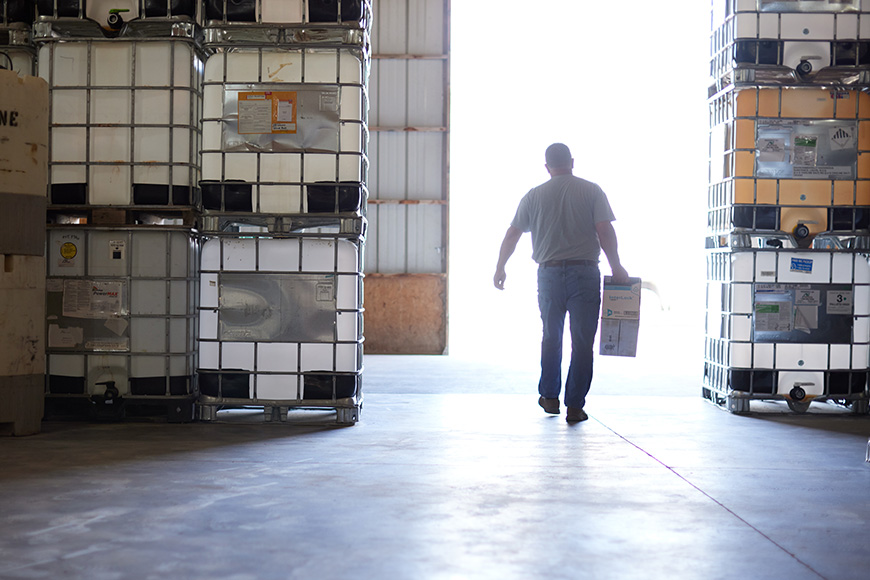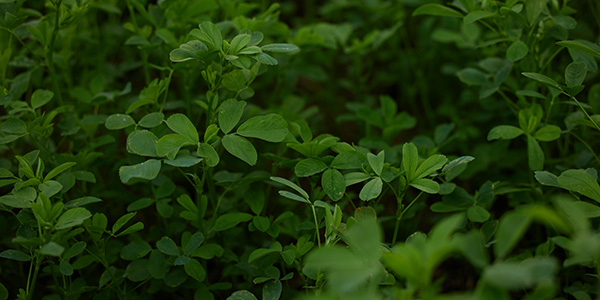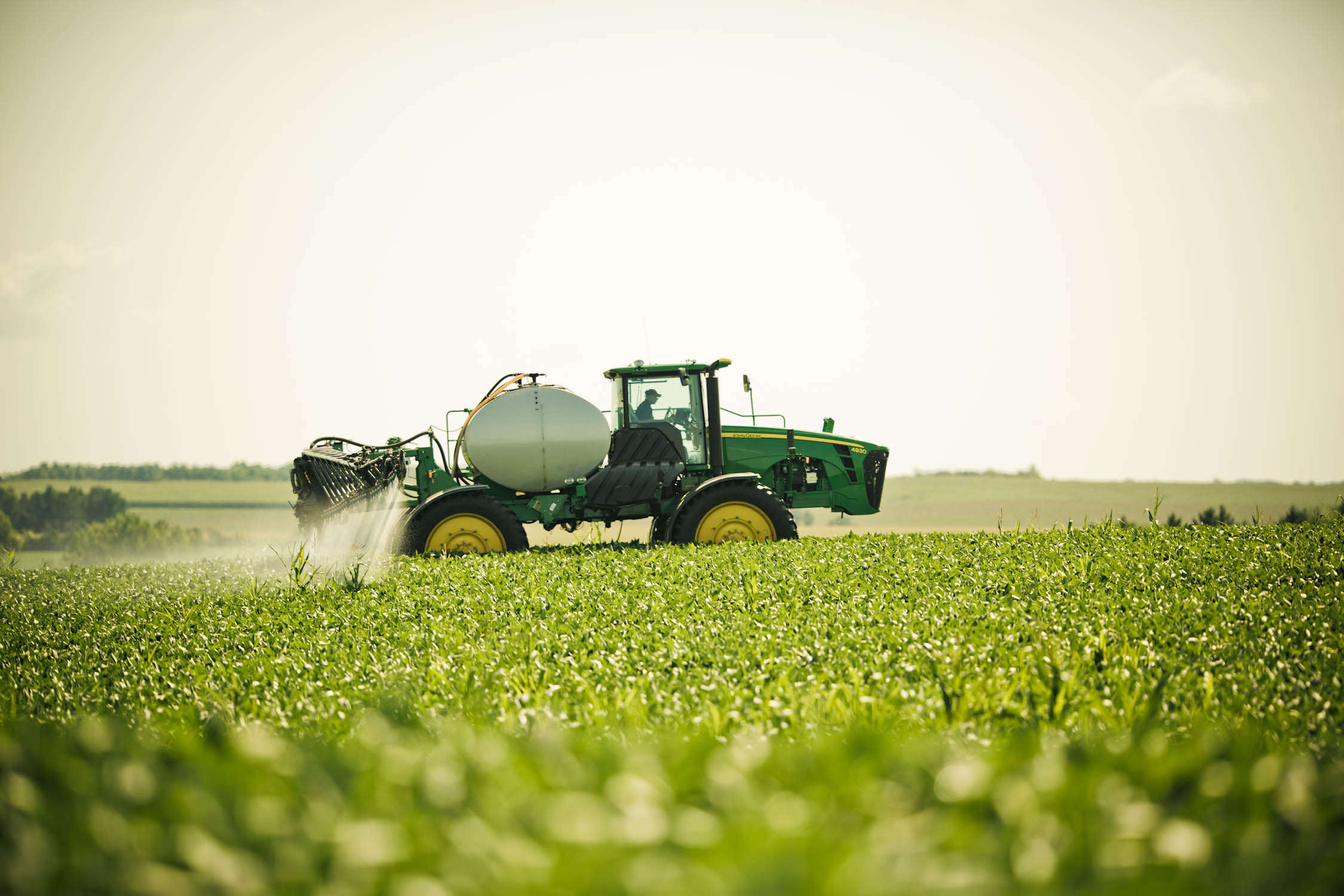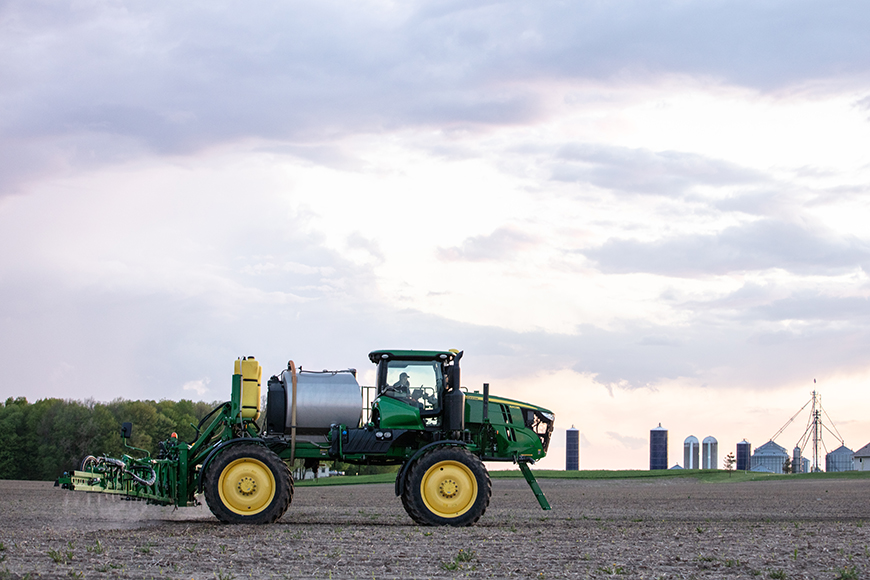4 Ways to Avoid Input Supply Challenges

This season, you probably saw spikes in input prices and less product availability. What you may not have seen, however, were the retailers scrambling behind the scenes, trading inventory with other locations and traveling long distances to get product to make sure their growers got what they needed to care for their crops, all in a year that was expected to have a relatively normal supply.
“We did our best to predict needs and forecast demand, but we couldn’t predict the volumes we moved this year,” said Joe Dee, sales agronomist for Ag Partners. “For glyphosate, for example, we estimated last year’s numbers plus growth potential but absolutely blew that number out of the water. Trying to find product when it was already short was tough.”
Heading into fall and 2022, input suppliers will be starting with depleted reserves, making it even more important for you to lock in inputs early and ensure you have what you need to succeed next season. Here are five ways to avoid supply challenges in the coming year.
If you typically stick to only spring-applied nutrition, this is a good year to consider a fall-applied strategy. Today, it looks like P and K prices will only get higher in the spring. Even though it will add another pass to your program, the cost savings are still likely to produce an attractive return.
“It’s advantageous to do a second pass in the spring for your nitrogen if you can do your P and K this fall. You’ll probably be able to get it done for less money, even with the extra pass. Plus, that’s less product you’re going to have to worry about securing in the spring,” said Dee.
The shortages experienced this year should be expected to some degree next year as well. To make sure you have what you need in-season, order product for every challenge that could come your way.
Take insecticide, for example. That’s something growers sometimes don’t book or prepay as they’re planning inputs in November and December but this year especially, it’s going to be important to secure anything you think you might need. If you don’t end up needing it, you can typically get your money back or it will at least stay safe in your account so there’s no risk in losing your investment.
“The first prices to come out aren’t going to get any lower. We’ll continue to see prices creep up so it’s better to just lock in inputs when available,” shared Dee.
Help your retailer help you by sharing your plans as early as possible. This will give them more time to plan and coordinate logistics on the back end. Wondering what to share? Your retailer would likely appreciate the answers to these questions:
“SECURE financing works really well for our customers. Everyone’s needs are different but SECURE is flexible and helps growers lock in the lowest rates,” shared Dee.
Plus, with SECURE, you can identify products you want to purchase but still change or modify those decisions as planting gets closer. This allows you to make a plan without writing a check and having to cancel or return products you decide you don’t want.
Enrollment for SECURE is open now with the ability to begin making seed and input commitments. If you’re ready to get started or want to talk more about locking in products and planning for next year, talk to your local WinField United retailer.
All photos are either the property of WinField United or used with permission.
© 2021 WinField United. Important: Before use always read and follow label instructions. Crop performance is dependent on several factors many of which are beyond the control of WinField United, including without limitation, soil type, pest pressures, agronomic practices and weather conditions. Growers are encouraged to consider data from multiple locations, over multiple years and to be mindful of how such agronomic conditions could impact results. SECURE and WinField are trademarks of WinField United All other trademarks are the property of their respective owners.
“We did our best to predict needs and forecast demand, but we couldn’t predict the volumes we moved this year,” said Joe Dee, sales agronomist for Ag Partners. “For glyphosate, for example, we estimated last year’s numbers plus growth potential but absolutely blew that number out of the water. Trying to find product when it was already short was tough.”
Heading into fall and 2022, input suppliers will be starting with depleted reserves, making it even more important for you to lock in inputs early and ensure you have what you need to succeed next season. Here are five ways to avoid supply challenges in the coming year.
1. Make fall applications, and book the product now.
If you’re a grower who usually applies phosphorus (P) and potassium (K) in the fall, work with your retailer to get product secured now. Prices are only going to continue to rise as time goes by, especially with logistical challenges currently holding up movement of crop nutrition products.If you typically stick to only spring-applied nutrition, this is a good year to consider a fall-applied strategy. Today, it looks like P and K prices will only get higher in the spring. Even though it will add another pass to your program, the cost savings are still likely to produce an attractive return.
“It’s advantageous to do a second pass in the spring for your nitrogen if you can do your P and K this fall. You’ll probably be able to get it done for less money, even with the extra pass. Plus, that’s less product you’re going to have to worry about securing in the spring,” said Dee.
2. Plan for the worst, hope for the best.
“Everyone is near empty on bulk crop protection products going into the fall after this big spraying season. There is not an abundance of inventory carryover on high volume products. Manufacturers are going to have to produce more than ever before if things continue moving the way they have this year,” explained Dee.The shortages experienced this year should be expected to some degree next year as well. To make sure you have what you need in-season, order product for every challenge that could come your way.
Take insecticide, for example. That’s something growers sometimes don’t book or prepay as they’re planning inputs in November and December but this year especially, it’s going to be important to secure anything you think you might need. If you don’t end up needing it, you can typically get your money back or it will at least stay safe in your account so there’s no risk in losing your investment.
3. Be in constant communication with your agronomist and retailer.
You can’t prepay everything you need for 2022 right now, but it’s important to check in with your retailer regularly to see what’s available so you can lock in the earliest prices and inventory.“The first prices to come out aren’t going to get any lower. We’ll continue to see prices creep up so it’s better to just lock in inputs when available,” shared Dee.
Help your retailer help you by sharing your plans as early as possible. This will give them more time to plan and coordinate logistics on the back end. Wondering what to share? Your retailer would likely appreciate the answers to these questions:
- What are your intentions for next year?
- Will you be adding more acres?
- Are you making any major changes to your operation?
- What are your crop rotation plans?
- Which soybean trait platforms are you likely going to plant?
4. Enroll in SECURE financing
SECURE financing is offered through local retailers and financially backed by WinField United. It offers flexible terms and low fixed rates on lines of credit so you can help reduce risk by locking in your product purchases at great prices with a low interest rate.“SECURE financing works really well for our customers. Everyone’s needs are different but SECURE is flexible and helps growers lock in the lowest rates,” shared Dee.
Plus, with SECURE, you can identify products you want to purchase but still change or modify those decisions as planting gets closer. This allows you to make a plan without writing a check and having to cancel or return products you decide you don’t want.
Enrollment for SECURE is open now with the ability to begin making seed and input commitments. If you’re ready to get started or want to talk more about locking in products and planning for next year, talk to your local WinField United retailer.
All photos are either the property of WinField United or used with permission.
© 2021 WinField United. Important: Before use always read and follow label instructions. Crop performance is dependent on several factors many of which are beyond the control of WinField United, including without limitation, soil type, pest pressures, agronomic practices and weather conditions. Growers are encouraged to consider data from multiple locations, over multiple years and to be mindful of how such agronomic conditions could impact results. SECURE and WinField are trademarks of WinField United All other trademarks are the property of their respective owners.





